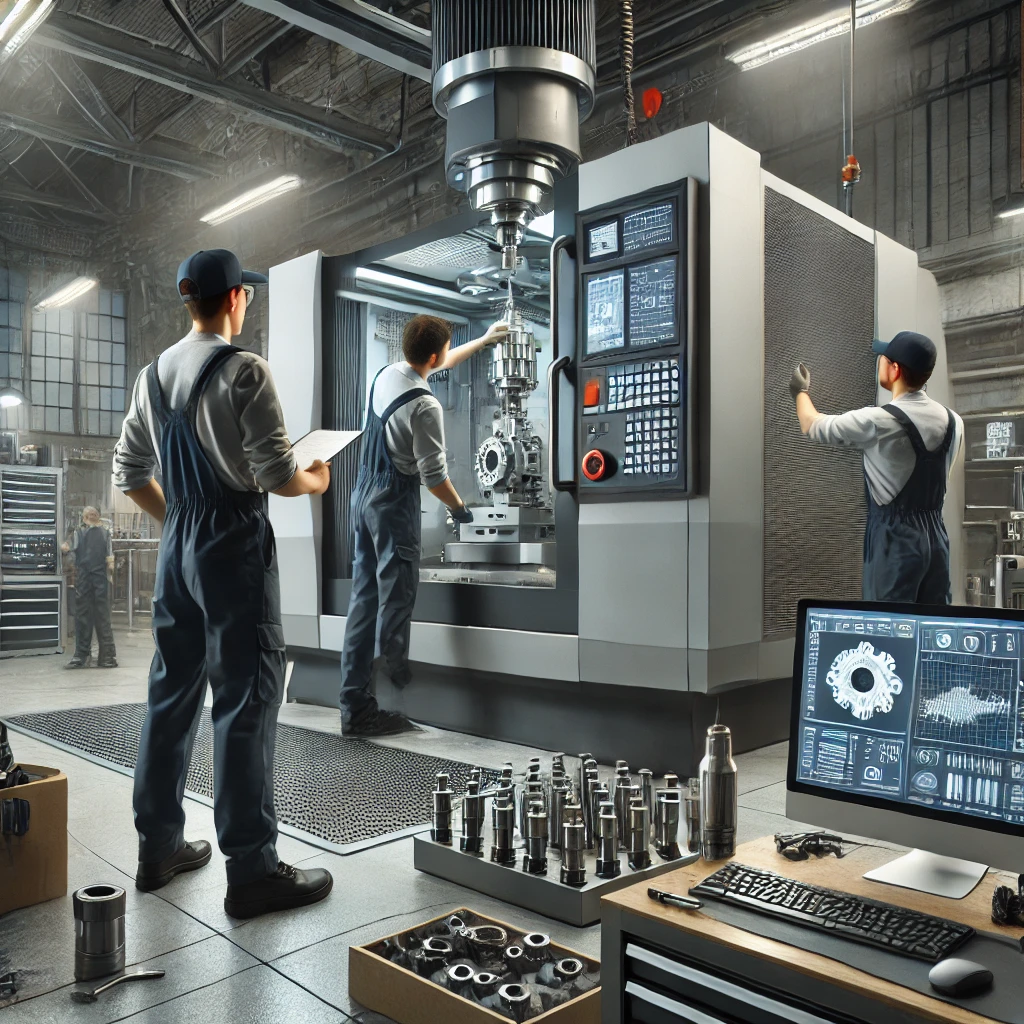21/07/2024
How to make machine failure assessment in CNC Vertical machining centres?
Assessing machine failure in CNC Vertical Machining Centres involves a comprehensive examination of various components, systems, and operational parameters. Here are at least 50 items to consider for a thorough failure assessment:
Mechanical Components
- Spindle Bearings:
- Check for wear, noise, and temperature abnormalities.
- Ball Screws:
- Inspect for wear, backlash, and lubrication issues.
- Linear Guideways:
- Assess for wear, lubrication, and alignment.
- Couplings and Belts:
- Look for wear, alignment, and tension issues.
- Tool Holders and Spindle Tapers:
- Inspect for wear, corrosion, and proper fit.
- Worktable:
- Check for flatness, wear, and alignment.
- Fixture Clamps:
- Ensure proper function and clamping force.
- Hydraulic Systems:
- Inspect hoses, pumps, and actuators for leaks and proper operation.
- Coolant System:
- Check for leaks, pump operation, and cleanliness.
- Pneumatic Systems:
- Inspect for leaks, pressure, and actuator function.
Electrical Components
- Control Panel:
- Inspect for loose connections, burnt components, and proper operation.
- Servo Motors and Drives:
- Check for overheating, noise, and smooth operation.
- Encoders and Feedback Systems:
- Ensure accurate positioning and signal integrity.
- Power Supply:
- Check voltage levels, stability, and for any signs of overheating.
- Relays and Contactors:
- Inspect for wear, proper operation, and arcing.
- Wiring and Cables:
- Check for insulation damage, loose connections, and wear.
- Sensors:
- Ensure all sensors are functioning correctly and providing accurate readings.
Software and Control Systems
- CNC Controller:
- Verify correct operation, check for error codes, and update firmware if needed.
- Software Settings:
- Ensure all settings are correct and match the machine specifications.
- Program Verification:
- Check for errors in the CNC programs and ensure they are optimized.
Lubrication Systems
- Automatic Lubrication System:
- Check for proper operation, leaks, and adequate lubricant levels.
- Manual Lubrication Points:
- Ensure all points are adequately lubricated.
Alignment and Calibration
- Machine Geometry:
- Check the alignment of the spindle, table, and tool holders.
- Calibration:
- Perform regular calibration of axes and feedback systems.
- Squareness and Parallelism:
- Ensure that the machine is square and all axes are parallel to each other.
Operational Parameters
- Load Monitoring:
- Monitor spindle and axis loads to ensure they are within normal operating ranges.
- Temperature Monitoring:
- Check for abnormal temperature readings in the spindle, motors, and electronics.
- Vibration Analysis:
- Use vibration analysis tools to detect abnormal vibrations that indicate mechanical issues.
Tooling and Workpieces
- Tool Life:
- Monitor tool life and replace tools as needed.
- Tool Breakage Detection:
- Ensure systems are in place to detect and respond to tool breakage.
- Workpiece Quality:
- Inspect finished workpieces for dimensional accuracy and surface finish.
Environmental Factors
- Ambient Temperature and Humidity:
- Ensure the machine is operating within specified environmental conditions.
- Dust and Contaminant Levels:
- Keep the machining area clean and free of dust and contaminants.
Maintenance Records and Procedures
- Maintenance Logs:
- Keep detailed records of all maintenance activities and inspections.
- Scheduled Maintenance:
- Follow a strict schedule for preventive maintenance tasks.
- Operator Training:
- Ensure operators are properly trained in machine operation and basic troubleshooting.
Hydraulic and Pneumatic Systems
- Hydraulic Fluid Levels and Quality:
- Check fluid levels and replace if contaminated or degraded.
- Pneumatic Pressure and Quality:
- Ensure pneumatic systems are operating at correct pressures and free of moisture.
Safety Systems
- Emergency Stops:
- Verify all emergency stops are functioning correctly.
- Safety Interlocks:
- Check that all safety interlocks are working as intended.
Auxiliary Systems
- Chip Conveyor:
- Inspect for proper operation and clear any blockages.
- Coolant Filtration:
- Ensure coolant filters are clean and replace them as necessary.
Component Specific Checks
- Spindle Motor:
- Check for overheating, unusual noises, and smooth operation.
- ATC (Automatic Tool Changer):
- Inspect for proper operation, alignment, and lubrication.
- Chip Blaster:
- Ensure proper operation and check for clogs.
- Rotary Table:
- Inspect for smooth rotation, wear, and alignment.
Data and Connectivity
- Data Logging:
- Ensure data logging systems are capturing all necessary operational parameters.
- Network Connectivity:
- Check network connections and ensure proper communication with control systems.
Operational Testing
- Test Runs:
- Perform test runs to ensure all systems are operating correctly under typical load conditions.
- Error Code Analysis:
- Regularly review and address any error codes generated by the CNC system.
By systematically assessing these components and factors, you can effectively diagnose and prevent machine failures in CNC Vertical Machining Centres, ensuring reliable and efficient operation.


